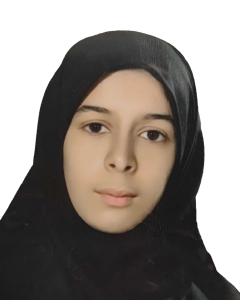Using fetal head and face markers in ultrasound images to diagnose Down's syndrome by means of deep learning - دانشکده فنی و مهندسی
Using fetal head and face markers in ultrasound images to diagnose Down's syndrome by means of deep learning

نوع: Type: thesis
مقطع: Segment: masters
عنوان: Title: Using fetal head and face markers in ultrasound images to diagnose Down's syndrome by means of deep learning
ارائه دهنده: Provider: faezeh sadat hoseini nia
اساتید راهنما: Supervisors: Dr. Moharram Mansourizadeh and Dr. hassan Khatanlou
اساتید مشاور: Advisory Professors:
اساتید ممتحن یا داور: Examining professors or referees: Dr. Abbas Ramezani and Dr. Razieh Tarkamani
زمان و تاریخ ارائه: Time and date of presentation: 2025
مکان ارائه: Place of presentation: آمفی تئاتر دانشکده مهندسی
چکیده: Abstract: Down syndrome is one of the most common genetic disorders that can cause serious physical and mental problems. Accurate diagnosis of this condition during pregnancy is very important; however, current methods such as amniocentesis and chorionic villus sampling carry a risk of miscarriage. Therefore, there is a need for rapid, accurate, and non-invasive diagnostic approaches. This study investigates the use of deep learning algorithms in analyzing ultrasound images for the detection of Down syndrome and other fetal abnormalities. The aim of this research is to introduce artificial intelligence techniques and algorithms used for diagnosing Down syndrome through ultrasound imaging, and to examine their performance and accuracy. Ultrasound images of healthy fetuses and those affected by Down syndrome will be studied to identify key features that distinguish the two groups. Our goal is to improve diagnostic methods and increase accuracy in detecting this condition in fetuses. Ultrasound tests are typically performed between the 11th and 13th weeks of pregnancy to measure markers such as nuchal translucency thickness and nasal bone length. If the initial results are suspicious, fetal head circumference may also be measured in the later weeks of pregnancy. Various neural network architectures, including recurrent neural networks (RNNs), generative adversarial networks (GANs), autoencoders, U-Net, and ResNet, have been employed for analyzing and processing ultrasound images. By applying deep learning algorithms to ultrasound analysis, it is expected that the accuracy of Down syndrome and other fetal anomaly detection will improve, while errors, costs, and diagnostic time will decrease. These algorithms can non-invasively analyze ultrasound images and provide faster results. By analyzing and comparing ultrasound images of healthy and Down syndrome fetuses, key distinguishing features can be identified, leading to improved diagnostic methods. Furthermore, deep learning models can predict the risk of genetic disorders such as Down syndrome and contribute to the development of intelligent systems that assist physicians in medical decision-making. Such systems can serve as decision-support tools for more accurate and rapid diagnosis of fetal abnormalities.
